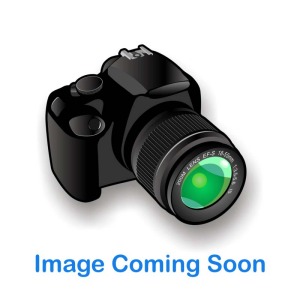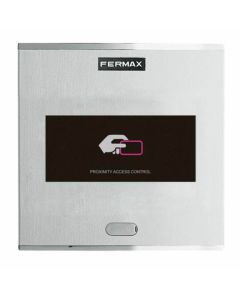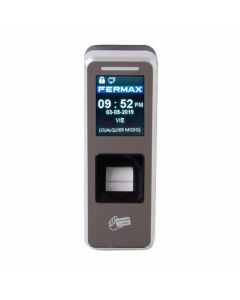We use cookies to make your experience better. To comply with the new e-Privacy directive, we need to ask for your consent to set the cookies. Learn more.
Choosing the Best Tag For Your Project: EM vs. MIFARE Features Explained


Discover the right tag for the right job: EM vs. MIFARE
From homes to businesses, access control systems are modern-day sentinels, employing a range of technologies like tags to secure our spaces.
From tracking down lost pets to using public transportation or paying electronic tolls, consumers are increasingly turning to tags for convenience and efficiency. Tags, like the MIFARE 1K and electromagnetic (EM) tags, are at the heart of these systems.
In a broad sense, both types of tags utilise Radio Frequency Identification (RFID) technology—a wireless system that uses radio waves to identify objects and people.
In this article, we delve into the comparison between these two popular options used in modern door entry and access control systems.


How electromagnetic tags work: A visual guide
Electromagnetic tags: A brief overview
EM tags operate on a low-frequency electromagnetic field at 125 kHz. Apart from being low-cost, these tags typically offer a long read range. However, they have slower data transfer rates compared to tags operating at higher frequencies.
At a fundamental level, each EM tag consists of two main components: an antenna and microchip. The antenna is a coil of wire that receives and transmits the electromagnetic signal. The microchip stores and processes data.
“Electromagnetic technology is a common low frequency standard. Our DC90SS kits work with EM tags,” says our technical team.
This technology is useful for industrial applications, animal identification, and basic access control systems.
MIFARE 1K Cards: NXP’s powerhouse technology
MIFARE 1K, on the other hand, operates at a high frequency of 13.56 MHz. The MIFARE 1K is a passive contactless smart card technology built on the NXP MF1 IC S50 chip. It features a coil embedded in plastic and operates using ISO/IEC14443A standards for contactless data and energy transmission. This is according to the manufacturer of these cards, NXP Semiconductors N.V.
According to NXP, MIFARE products can interact with Near-Field Communication (NFC)-enabled devices. Primarily designed for data storage, MIFARE 1K employs a segmented memory structure for basic security.
MIFARE Classic 1K tags offer relatively quick data transfer rates. These tags are thus well-suited for high-volume transactions in various applications such as advanced access control, public transportation, and electronic toll collection, states NXP.
"Higher frequency tags like MIFARE 1K at 13.56 MHz generally support faster data transfer rates than lower frequency tags like EM tags at 125 kHz. Therefore, MIFARE 1K tags have faster data transfer rates compared to EM tags," says our IT Manager, Julian Strut.
While it is often generalised that EM tags typically have a longer read range than higher frequency tags like MIFARE 1K, this is not always the case. In reality, EM and MIFARE 1K tags often have comparable read ranges, generally up to 10 centimetres. The read range is influenced by a combination of factors, including antenna size, reader power, and environmental conditions.
Our suggestions
Our DC300 works with EM tags and MIFARE Classic 1K tags and is a cutting-edge access control keypad that can be managed remotely. It supports up to 10,000 different card users, and 500 fingerprint/PIN users making it ideal for commercial use!
The DC260 standalone keypad is an excellent choice for installers. The versatile universal proximity reader (UPR) for the DC260, supports both EM and MIFARE technologies. The SRS UPR+ Universal Access Control Proximity Reader also offers flexible installation options—wall, flush, or panel mounting capabilities. It can read both cards and tags. Kit options are available, saving you time and money.
Choosing the right tag technology
The optimal choice between EM tags and MIFARE 1K tags depends on your specific project requirements. Three key points to consider are:
|
Security |
Range | Budget |
| EM tags are generally less secure and more susceptible to cloning. Compared to standard EM tags, Mifare 1K tags offer better security, including encryption and authentication, making them more resistant to unauthorised access. | In some applications, a longer read range is necessary. EM tags may be your best bet. MIFARE 1K tags, on the other hand, can be great for short range, high-volume transactions. | EM tags are simpler and cheaper to produce than MIFARE 1K tags, making them suitable for basic applications. |
At Door Entry Direct, we offer a comprehensive range of door entry kits and accessories, from basic systems to advanced solutions featuring cutting-edge technologies. Partner with us to take your installations from one level to the next, with super-fast delivery and unmatched customer support. With over 10,000 products in stock, why shop elsewhere? We’ve also got you covered with bespoke stainless steel panel engraving, with your logo in colour, at no additional cost.
Follow us on social media for exclusive product updates, promotions, and industry news.














